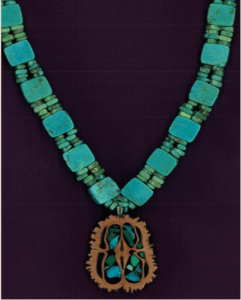It is no secret that since the colonization of America, that the government has not treated First Nation tribes with the respect and fairness due to them. Early settlers forcibly took land from the tribes already living here. As time progressed, the government became involved in the disruption of First Nations People. One of the most devastating government acts was the Indian Removal Act of 1830, which led to the Trail of Tears as Native Americans were forced from their homes in the eastern US to Oklahoma.
 Although US-Tribal relations have improved since the 1830s, Tribes today still struggle to fight against discrimination, voter suppression, poverty, and lack of respect, all a legacy of colonization and western expansion. For example, federal recognition is a major milestone in tribes gaining sovereignty as a nation but can be very difficult to obtain. The tribe must prove that its members are direct descendants from one or more tribes throughout history and that they maintain their own governance of their members. The tribe must provide documentation of membership and their government such as a constitution. One of the more complicated criteria is that the tribe must be able to prove that they have maintained their identity as “American Indian” or “Aboriginal” from their beginning to the present. This might appear to be simple but the Brothertown Tribe is finding this to be very complicated.
Although US-Tribal relations have improved since the 1830s, Tribes today still struggle to fight against discrimination, voter suppression, poverty, and lack of respect, all a legacy of colonization and western expansion. For example, federal recognition is a major milestone in tribes gaining sovereignty as a nation but can be very difficult to obtain. The tribe must prove that its members are direct descendants from one or more tribes throughout history and that they maintain their own governance of their members. The tribe must provide documentation of membership and their government such as a constitution. One of the more complicated criteria is that the tribe must be able to prove that they have maintained their identity as “American Indian” or “Aboriginal” from their beginning to the present. This might appear to be simple but the Brothertown Tribe is finding this to be very complicated.
The Brothertown Tribe was created by member of many different tribes of the Northeast known as the praying tribes. They are currently trying to become a recognized tribe but are having difficulties due to their previous adoption of European materials and ways of life. An archaeological survey, conducted by Craig Cipolla of the University of Pennsylvania, of Brothertown sites sought to aid in connecting the current tribe to their ancestral identity. However, according to the Office of Indian Affairs in 2009, the archaeological investigation proved that the tribe showed little evidence of maintaining an identity as Native American. While the tribe did adopt Christianity, built a Methodist church, and lived on farms similar to those of European settlers, this does not mean that they do not identify as Native American. In 1839 the members of the Brothertown tribe were given US citizenship and land. By signing this citizenship act, the members were no longer tribe members in the eyes of the government and therefore did not need protection. They lost their tribal recognition. Although, they lost recognition and their identity in a legal sense, they did not lose their personal identities as Brothertown Tribe members.
Archaeologists must recognize that their excavations, publications, and work can impact the public and the group they are researching. In the case of the Brothertown Tribe, the negative and incomplete research was misinterpreted to deny a tribe recognition. As well, what exactly makes up an identity needs to be considered. While the government may say that the Brothertown Tribe does not identify as a Native American tribe because of their settlement style and material culture, the members of the tribe to identify as Brothertown. They are still working on becoming recognized today.
For more information about the Brothertown Tribe see: http://brothertownindians.org and PBS
The requirements for Federal Recognition can be read here.
Follow IUP Anthropology of Facebook, Twitter, and Instagram

